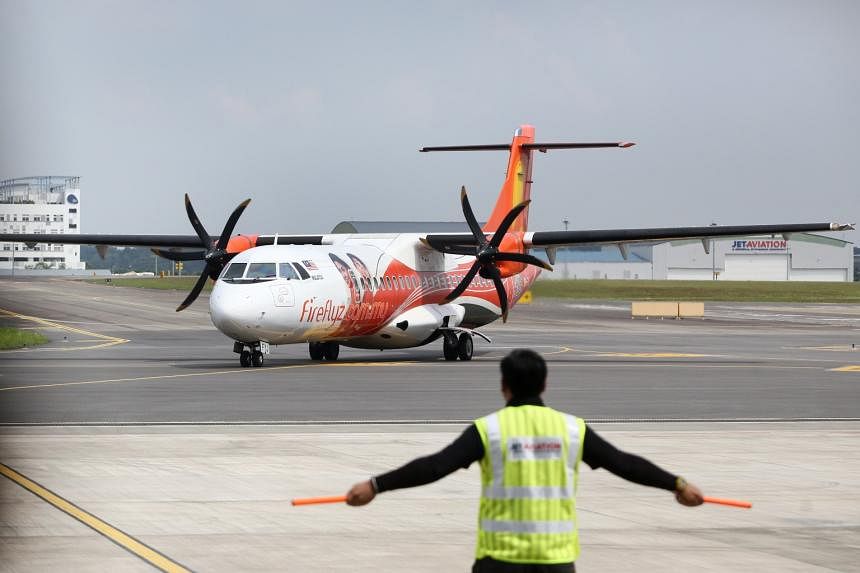SINGAPORE - Malaysian low-cost carrier Firefly will resume flights between Singapore and Malaysia from Seletar Airport from June 13, after two years of pandemic-induced suspension.
"Singapore, we're back!" it said on its website on Monday (May 23). A one-way ticket between Singapore and Subang, which is near Kuala Lumpur, starts from RM119 (S$37), Firefly said.
It will operate two flights out of Seletar Airport to Sultan Abdul Aziz Shah Airport every day, down from six a day in 2019. Each flight on its ATR72-500 aircraft will be able to carry 72 passengers.
"With the opening of Malaysia's border... Firefly sees this as a perfect time to reinstate and play the role of connecting the communities within Singapore and Malaysia," Firefly chief executive Philip See said in a statement.
Changi Airport Group managing director for air hub development Lim Ching Kiat said Seletar passenger terminal, an $80 million facility opened in 2019, is ready to support Firefly's operations.
The airport has not served passengers since the pandemic struck two years ago.
"We have seen strong travel demand between both countries since travel restrictions eased. We look forward to welcoming and serving passengers at the airport," Mr Lim said.
Whether the route will take off is a massive unknown. Even before the pandemic, Firefly had said it was struggling to fill seats. The Singapore-Subang route, in particular, was one of the least popular, with typically only 40 per cent of seats occupied.
Its origin airport in Seletar, decided upon after talks with Changi, was a huge disadvantage, thought by many to still be a military airport.
Its operations had also been suspended for nearly five months in 2019 over a bilateral air disagreement between Singapore and Malaysia, causing it to lose customers.
Malaysia's civil aviation authority had objected to Singapore's plans to introduce Instrument Landing System procedures at Seletar, which guide pilots' landing from a ground-based station, on the grounds that it will affect the nearby town of Pasir Gudang.
Singapore has since agreed to use a Global Positioning System-based instrument approach instead, using signals from a satellite to guide landing.
The return of the low-cost arm of Malaysia Aviation Group comes amid many other regional budget carriers, such as Scoot and Jetstar, gradually increasing the number of intra-regional flights in a bid to recapture market share in the once oversaturated market.
With borders in South-east Asia virtually all opened from April, passenger traffic in regional hubs like Kuala Lumpur International Airport, Bangkok's Suvarnabhumi Airport, Changi Airport and Jakarta's Soekarno-Hatta International Airport are all fast regaining traffic.
In May, the number of flights and seats that airlines planned to operate at multiple airports reached 40 per cent to 50 per cent of pre-pandemic levels.


